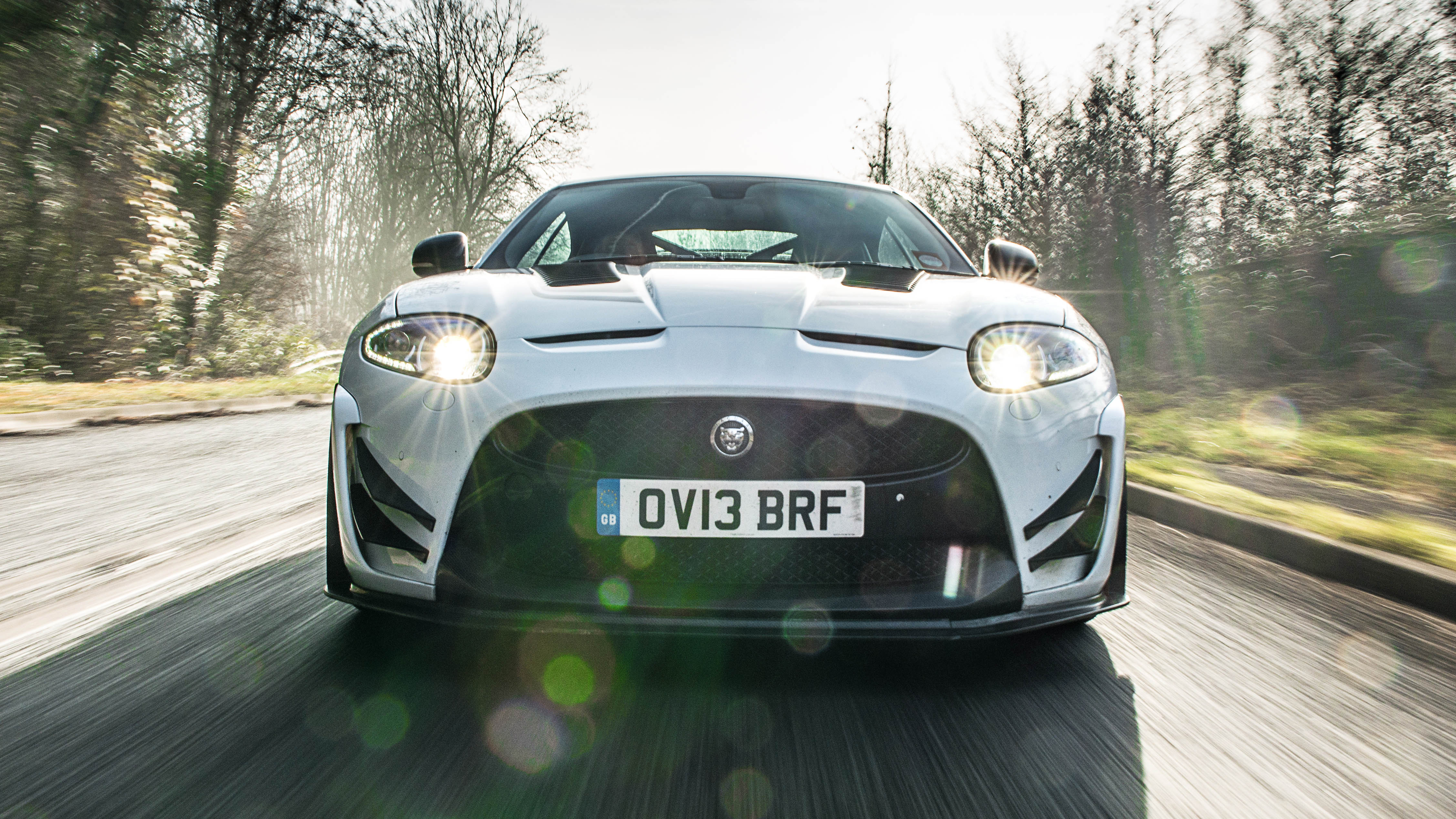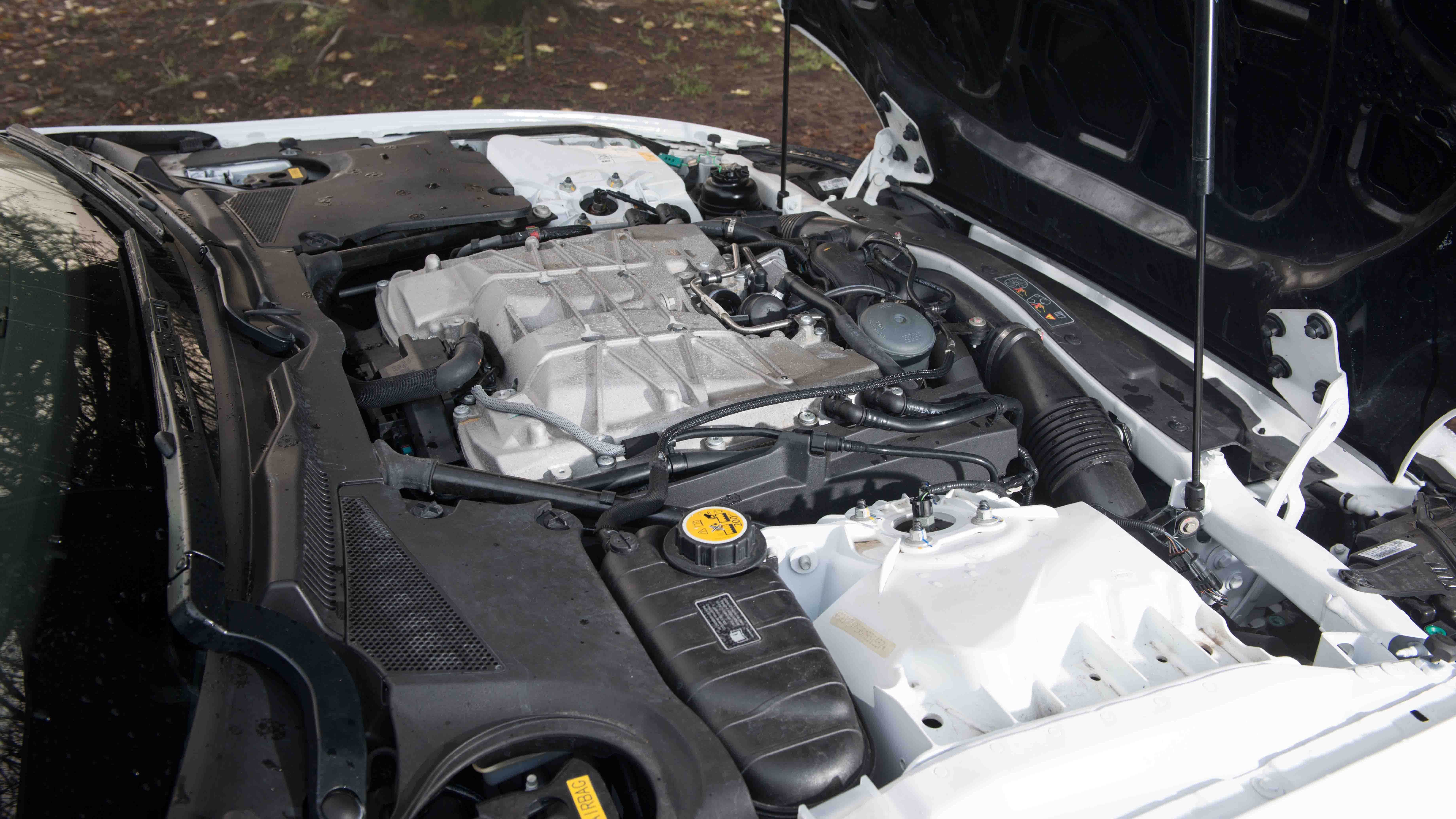
Retro review: the Jaguar XKR-S GT
This review was first published in Issue 253 of Top Gear magazine (2014)
You might be wondering what’s going on here, why Jaguar hasn’t pensioned the XK off (it’s now seven years old) and focused its racier efforts on the F-Type, instead of seeing just how many more initials they can add before the XK runs out of rump space. Fair point. Especially seeing as the XK dines out at the GT end of the automotive food chain, where servings arrive with double helpings of lux and cruise.
So let’s deal with the reasoning first, before we head on to see what’s been done and what the end result is like. It’s about brand building. Jaguar won’t sell more than 50 of these XKR-S GTs globally (30 in the USA, 10 for the UK, a handful more in Canada), which means that even if they all sold at the asking price, we’re talking a maximum income of £6.75 million. Sofa change to a car company, and I guarantee it won’t have covered the investment put in.
But a bit of engineering practice never goes amiss as a means of keeping the folk in the workshops entertained, and the whole Jag-builds-a-GT3 story is a potent one, pointing to a future where Jaguar might have a tinker with an F-Type coupe, for instance. So let’s view this as a starting point to a life beyond R for that car.
Now, here it’s worth pointing out that the new F-Type sits on a shortened (and significantly modified) version of the XK’s platform, which has allowed Jag to re-engineer some bits from the new car back onto the old car. And then alter them some more. You could almost see the GT as a test bed. Because if you were thinking this was no more than a visual reworking, you would be sorely mistaken. The whole rear axle is new. At the front, only the suspension’s upper arm has been carried over. The steering rack is faster, there’s more camber on the wheels, plus a set of carbon-ceramic brakes make their debut here. They’re enormous – 398mm in diameter at the front, 380mm at the rear – and despite their size, reduce the all-important unsprung weight by 21kg.
That’s a huge difference. Removal of the rear seats, some sound-deadening and sticking in a pair of lightweight front buckets contributes to a total weight loss of around 40kg. Jaguar claims a weight of 1,713kg, but is a bit cagey as to whether that includes the roll cage or not – probably not, given the US car won’t be fitted with it.
But what’s 40kg here or there when you have 542bhp to do the pushing? And yes, that figure probably does sound familiar. The supercharged V8 engine and six-speed automatic gearbox have been carried over from the standard XKR-S. As have the keyless entry system and heated steering wheel. No, the GT is not a car that has shed the options extravagance completely – you’ll find no Porsche-style fabric doorhandles here.
Throw all these ingredients into a pot and reduce them down to a figure, and you get 7min 40sec – its Nürburgring lap time. A GT3 is over 10secs faster. But then, to quote David Pook, the project’s chief of steering, handling and dynamics: “We weren’t chasing the GT3. That’s not a performance level we were aiming at. Instead, we wanted lots of really exploitable performance.”
And, boy, have they got it. There’s a bit of lag in the gearbox – the old six-speeder is nowhere near as sharp and reactive as the ZF eight-speeder in the F-Type – but stick to the manual paddles, engage Dynamic mode, hit the loud pedal and it’s… loud. Or, rather, LOUD.
Running the F-Type as my lifer at the moment, I often find myself wondering if there’s anything that makes more noise. The Lambo Aventador and Ferrari 458 are in the same ballpark, but the GT isn’t. It’s one louder. Or maybe even two. The noise has a purer motorsport tinge to it than the slightly forced F-Type, and you’ll listen in vain, even if you hunch forward in the seat (tricky, given the fourpoint harness, although there’s also a standard seatbelt for the, er, belt-and-braces approach) to hear the supercharger over the exhaust.
Top Gear
Newsletter
Thank you for subscribing to our newsletter. Look out for your regular round-up of news, reviews and offers in your inbox.
Get all the latest news, reviews and exclusives, direct to your inbox.
Yes, it’s fast, but what’s perhaps most surprising is that it manages the power and acceleration so well. That’s not true of the standard XKR-S. Travel rapidly in that, and body control soon struggles to keep a rein on things, but the GT is from the Porsche GT3 school of chassis control. Like that car, it seems to pack supreme damping and rocksolid stability into little shock travel, while at the same time delivering a ride that, although firm, is never jarring. It’s not as focused as a GT3, of course – there’s less steering feel and more weight involved – but you find yourself getting into a lovely rhythm with it, and travelling faster than you thought possible. Especially given the heavily conflicting presence of Pirelli P Zero Corsa trackday rubber and a damp December day.
Yes, wheelspin is an issue if you want to make it one, but, even then, this feels a trustworthy car, one that won’t bite despite its attitude and general demeanour. Due largely to a 120mm longer wheelbase, it feels much better tied to the road than the slightly lairy TG Garage F-Type. And those carbon-ceramic stoppers are sensational, not only in power – that’s normal – but because they have the rarer attributes of bite and feel.
Look, it lacks the pure ability, polish and finish of a 911 GT3. It doesn’t feel like an enormous amount of time or money has been lavished on it. It’s big and a bit simple-minded. The front-engined, rear-drive manners give it a more Stateside vibe that puts me slightly in mind of the last-generation Corvette Z06 (a mighty car) or for argument’s sake, the new Viper Time Attack. Yet it has character and talent and feels hand-crafted in a very personal way, a small-batch skunkworks project that the people involved cared deeply about. It may be stupid money at £135,000, but you can’t deny it bodes well for the future.
Featured







